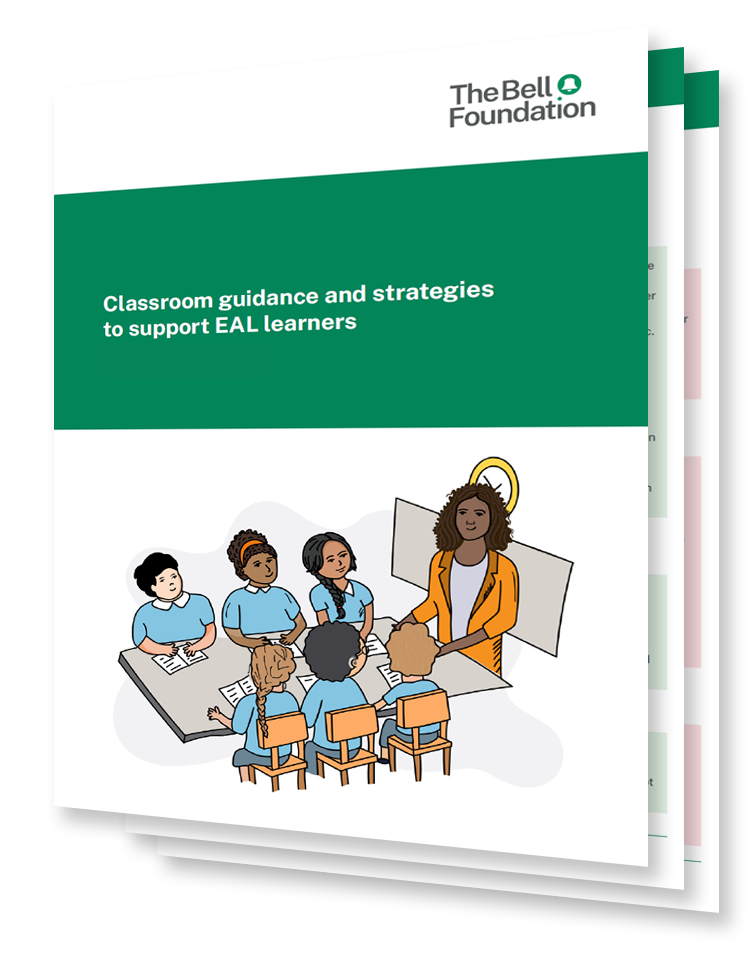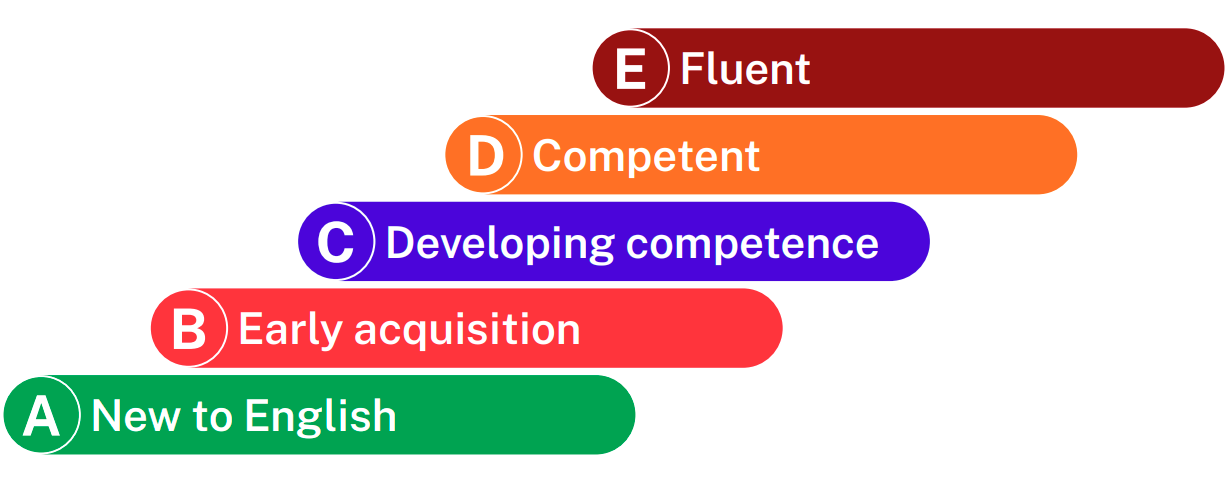Classroom guidance and strategies to support EAL learners
Our EAL classroom guidance and strategies aim to support teachers to plan and embed appropriate teaching and learning opportunities when working with EAL learners in primary and secondary settings.
Download resources
-
Classroom Support Strategies - Primary Settings
-
Classroom Support Strategies - Secondary Settings
Jump to:
- How the guidance and strategies can help you and your EAL learners.
- Who are the guidance and strategies for?
- How to use the guidance and strategies to support EAL learners.
- How are the guidance and strategies organised?
How the EAL guidance and strategies can help you and your learners
- It supports teachers to plan and embed appropriate multilingual pedagogies to promote the learning of EAL learners, using our EAL Assessment Framework for Schools;
- It provides suggestions of practical classroom techniques and activities that match learners’ levels of English language proficiency;
- Additionally, it provides examples of practical classroom strategies and models of support that will both enhance access to the curriculum as well as the development of English language proficiency alongside curriculum learning;
- Finally, it signposts relevant resources and tools.
Who are the EAL guidance and strategies for?
- Classroom/subject teachers who have or expect to have EAL learners in their classes;
- EAL co-ordinators or those in a similar role seeking to advise teachers on how best to include EAL learners;
- Teaching assistants (TAs) working in classes where there are EAL learners.
How to use the EAL guidance and strategies to support learners
After an assessment and for ongoing holistic assessment
When EAL learners have been assessed using our EAL Assessment Framework, you can refer to the guidance for ideas and suggestions. For example, if you have a new EAL learner in your class who is assessed as working at band B, you will find it useful to read the relevant band B suggestions, as well as some of those for bands A and C.
For teaching ideas
The guidance and suggestions offer some teaching ideas and examples which you can adapt to suit your context. Links are also included to resources which will provide further detail, including some of our Great Ideas, a series of approaches and strategies we recommend for EAL learners.
For classroom organisation ideas
The guidance includes suggestions on classroom organisation, for example through seating/grouping ideas, ways of encouraging and promoting the use of languages known by learners, and making academic content accessible whilst maintaining high expectations.
How are the EAL guidance and strategies organised?
Primary and secondary settings
The guidance is separated into primary and secondary phases and includes age-appropriate examples from all key stages. In addition, you can download the guidance for each phase as a separate document.
EAL assessment bands
The guidance is organised according to the five assessment bands A–E, following our EAL Assessment Framework for Schools:

As learners do not always fit neatly into one band and neither do activities and strategies, you may find it useful to read the suggestions for the bands below and above the band at which your learner is currently working. Additionally, some of the suggestions are relevant for more than one band but, as we have avoided repetition, referring to the previous band is recommended.
Four language skills
The guidance and strategies are divided into the skills useful for literacy, including:
 |
Reading and viewing |
 |
Writing |
As well as for those useful for oracy, which include:
 |
Speaking |
 |
Listening |
Inevitably there is overlap between all of these. For example, good reading/viewing and writing activities always involve some element of teacher explanation and class or group prediction, planning, or discussion, which involves oracy work. Therefore, you will find it beneficial to read both sections.
Five key EAL principles
Within each band, the guidance and suggestions are organised into five sections corresponding with our five evidence-informed key principles for effective EAL practice.
 |
Multilingualism as an asset |
 |
High expectations with appropriate support |
 |
Integrated focus on language and content |
 |
Effective and holistic assessment |
 |
Social inclusion |
© The Bell Educational Trust Limited. This resource is free to use for educational purposes.
